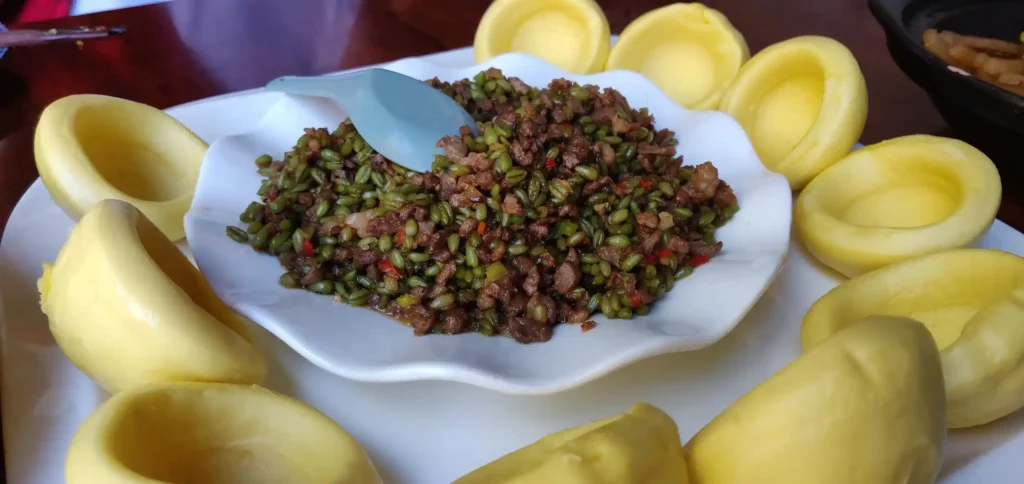
A Journey Through Ancient Flavors
Chinese cuisine, with over 5,000 years of history, represents one of the oldest and most complex culinary traditions in the world. What we know today as Chinese cuisine is the result of centuries of evolution, adaptation, and innovation that have given rise to a universe of flavors, techniques, and culinary philosophies that transcend borders.
Origins and History of Chinese Cuisine
The history of Chinese cuisine dates back to the Shang Dynasty (商朝) between the 16th and 11th centuries BC, when elaborate cooking methods and a sophisticated food culture already existed. During the Zhou Dynasty (周朝), many of the principles that govern Chinese cuisine to this day were established, including the harmony of the five flavors (sweet, sour, bitter, spicy, and salty) and the balance between foods according to the theory of Yin and Yang (阴阳).
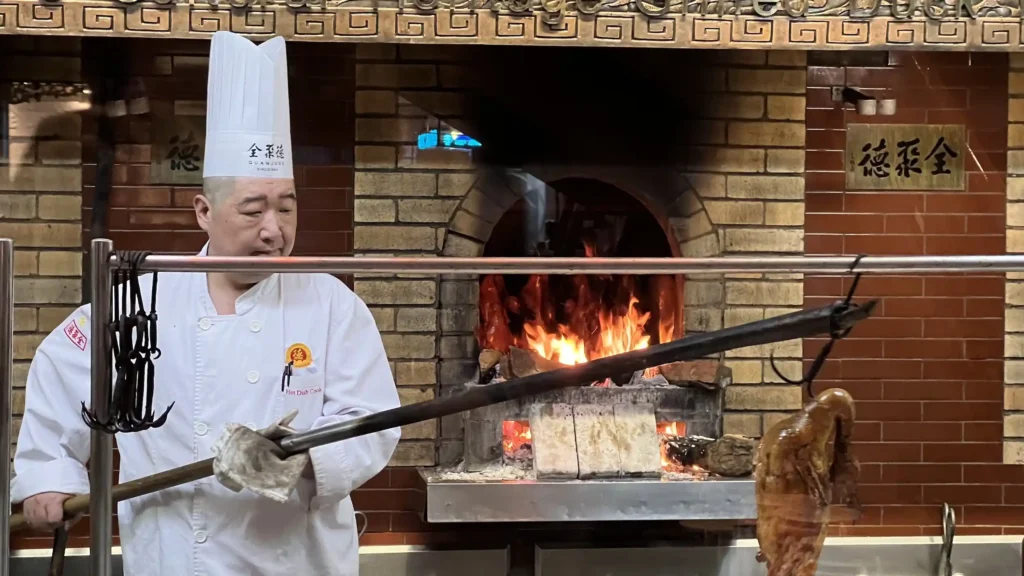
Over the centuries and through the different dynasties, Chinese cuisine was enriched with new ingredients, techniques, and influences. The Silk Road (丝绸之路) played a fundamental role, introducing products such as peppers, corn, and tomatoes from the Americas, as well as spices from the Middle East and techniques from Central Asia.
Contemporary Chinese Cuisine
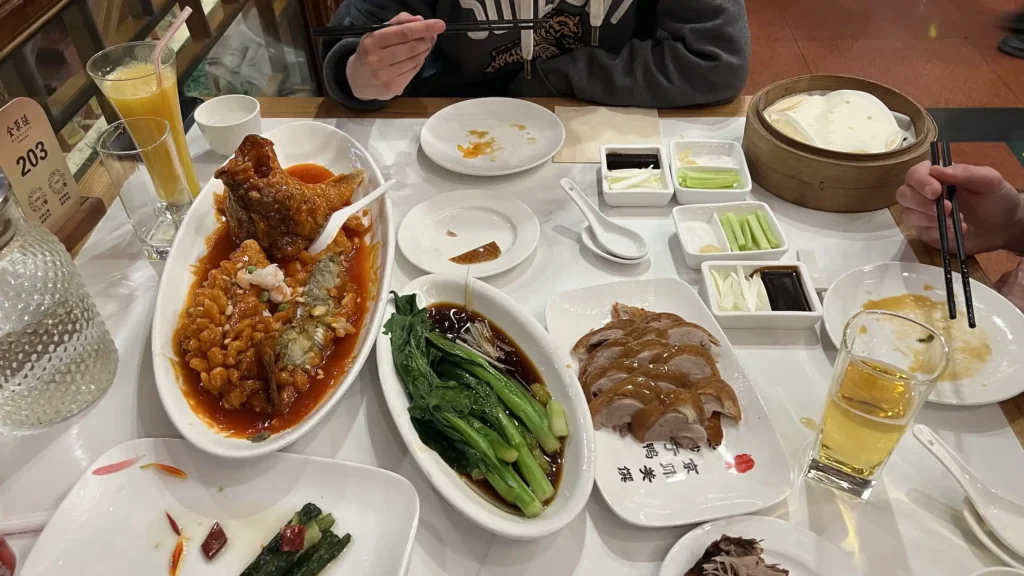
Today’s Chinese cuisine is a mosaic of regional traditions, where ancient techniques coexist with modern innovations. In large cities such as Shanghai (上海), Beijing (北京), and Guangzhou (广州), luxury restaurants reinterpret traditional dishes with contemporary presentations, while small street stalls maintain ancient recipes.
A distinctive characteristic of contemporary Chinese cuisine is its adaptability and pragmatism. Chinese chefs have been able to incorporate Western techniques while preserving the philosophical foundations of their cuisine. Furthermore, contrary to what many people think, domestic Chinese cuisine is generally simple, nutritious, and based on fresh vegetables, complemented by small amounts of animal protein.
China’s Great Culinary Regions
North: The Kingdom of Wheat and Robustness
Northern Chinese cuisine, led by Beijing and Shandong Province (山东), is characterized by the predominant use of wheat instead of rice. Here we find the famous noodles (面条), steamed buns (包子), and dumplings (饺子).
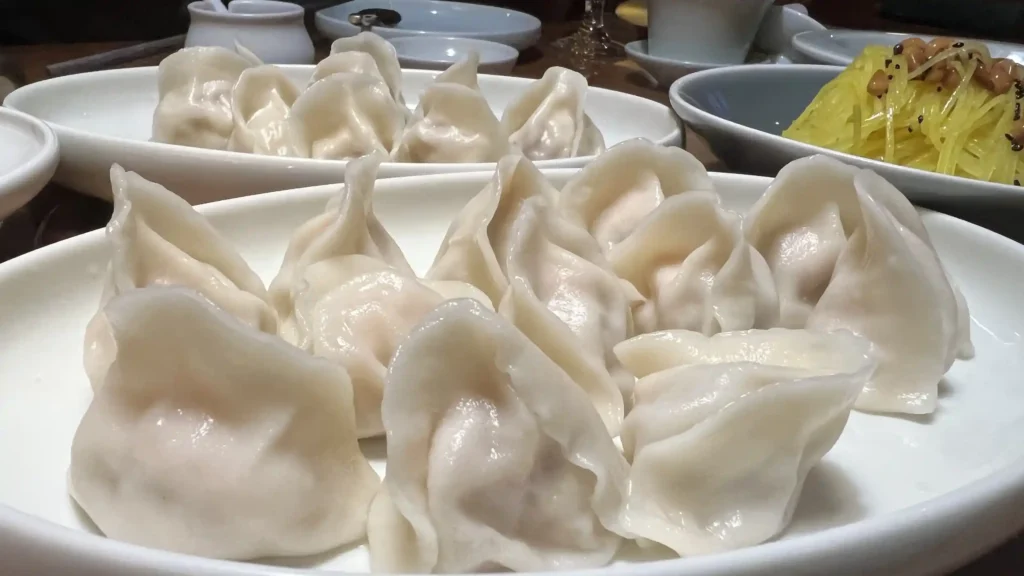
The cold climate calls for hearty dishes and techniques such as grilling, breading, and frying.
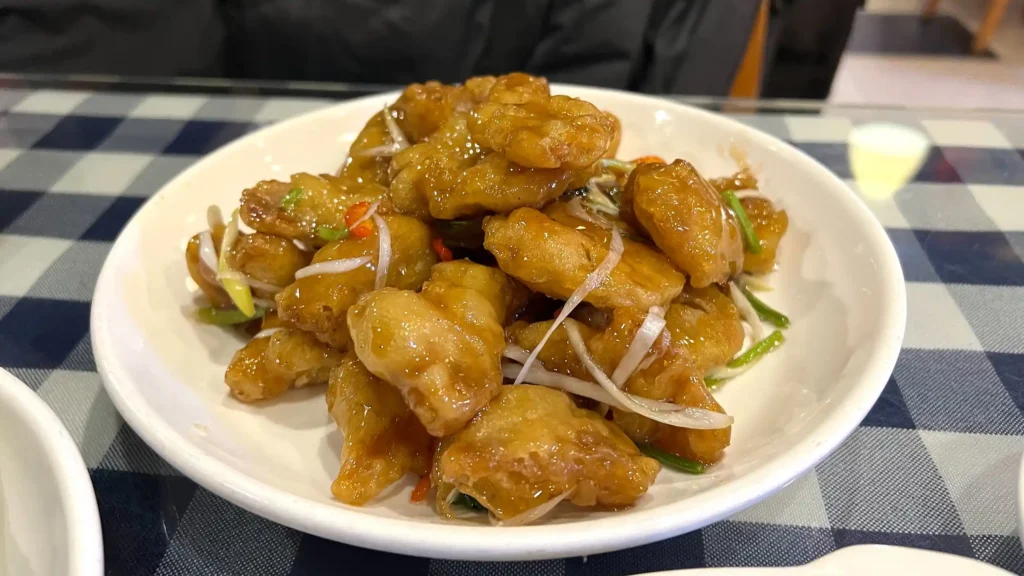
Flavors tend to be salty and intense, with abundant use of garlic and onions.
South: The Delicacy of Rice and Fresh Flavors
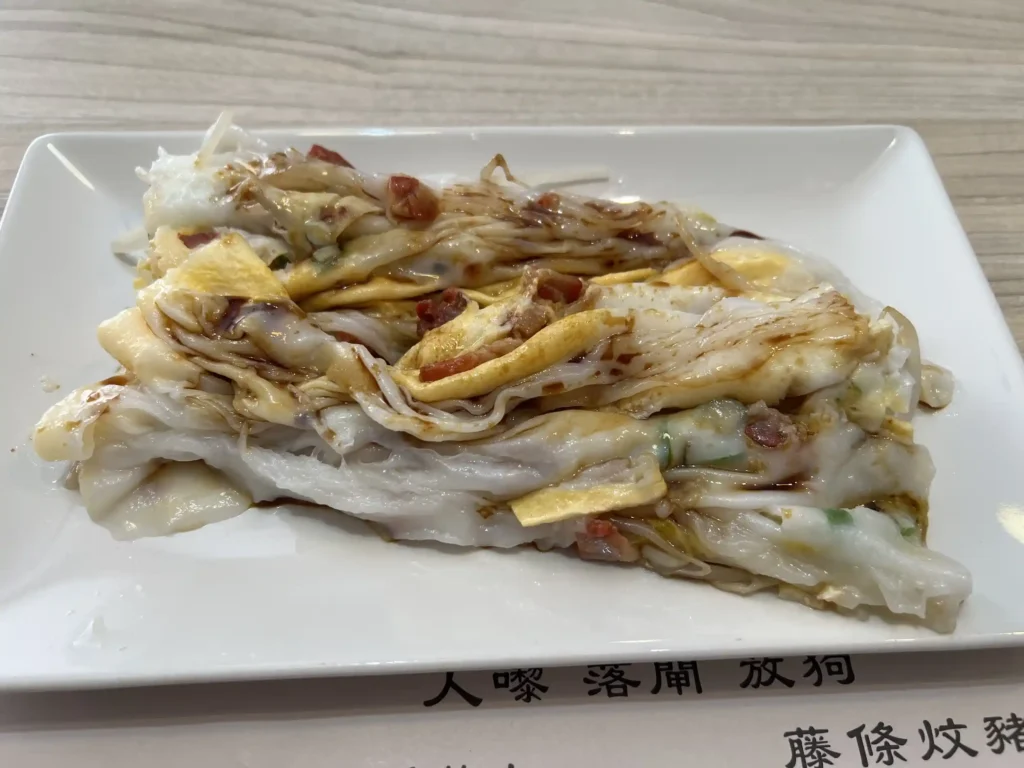
The south, especially Guangdong Province (广东) and its capital, Guangzhou, is the birthplace of world-renowned Cantonese cuisine. Here, rice is king, and flavors tend to be subtle and fresh to highlight the natural quality of the ingredients. Techniques such as steaming and stir-frying (炒) predominate to preserve textures and nutrients.
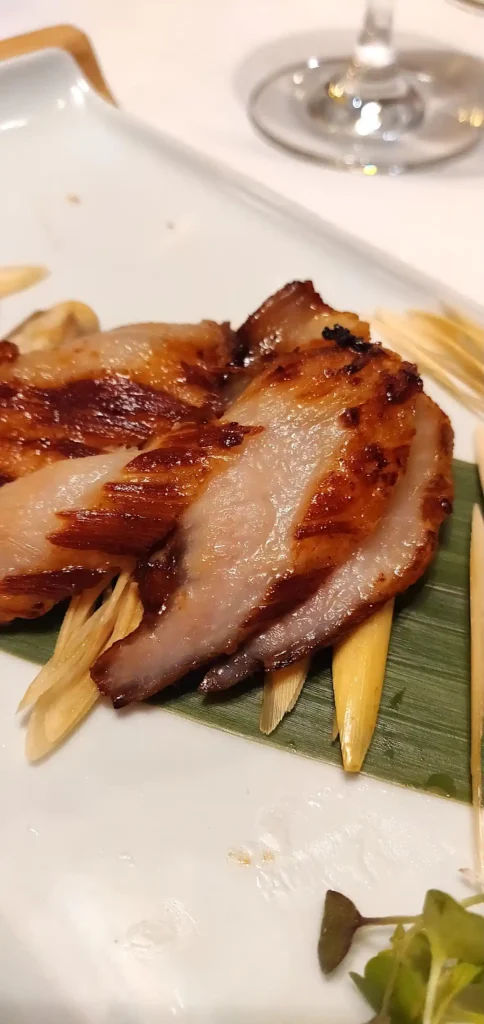
The availability of seafood makes seafood the star, along with an astonishing variety of vegetables. Dim sum (点心), small portions served in bamboo baskets, is quintessential to this region, with creations such as steamed shrimp (虾饺) or rice noodle rolls (肠粉).
East: Sophistication and Sweetness
The eastern region, with Shanghai and the provinces of Jiangsu (江苏) and Zhejiang (浙江), offers a refined cuisine that balances sweetness and saltiness. Dishes often incorporate sugar and vinegar to create complex flavor profiles, such as dongpo pork (东坡肉) or drunken chicken (醉鸡).
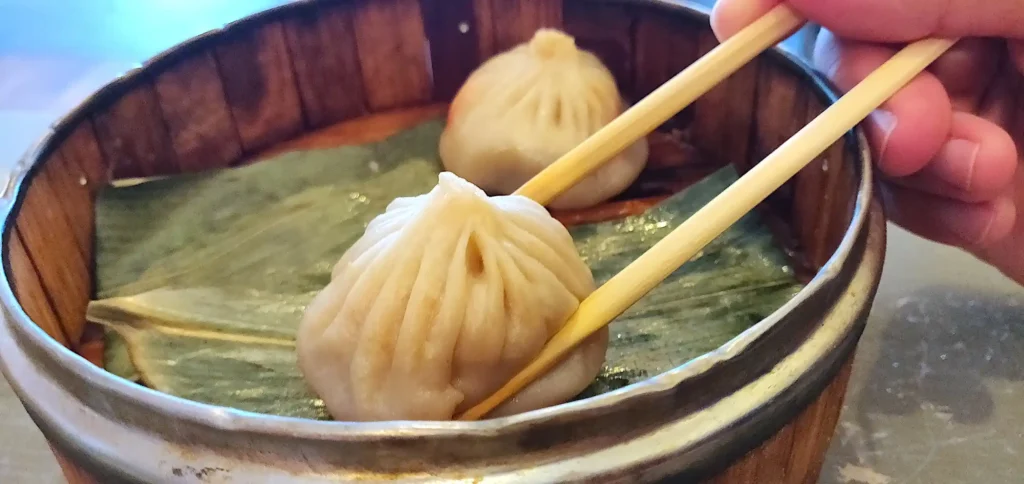
The abundance of lakes, rivers, and coastlines provide a wide variety of fish and seafood. Shanghainese cuisine is famous for its slow-cooking techniques and dishes such as soup-filled dumplings (小笼包), a unique culinary experience where the broth is solidified with gelatin before being wrapped in dough.
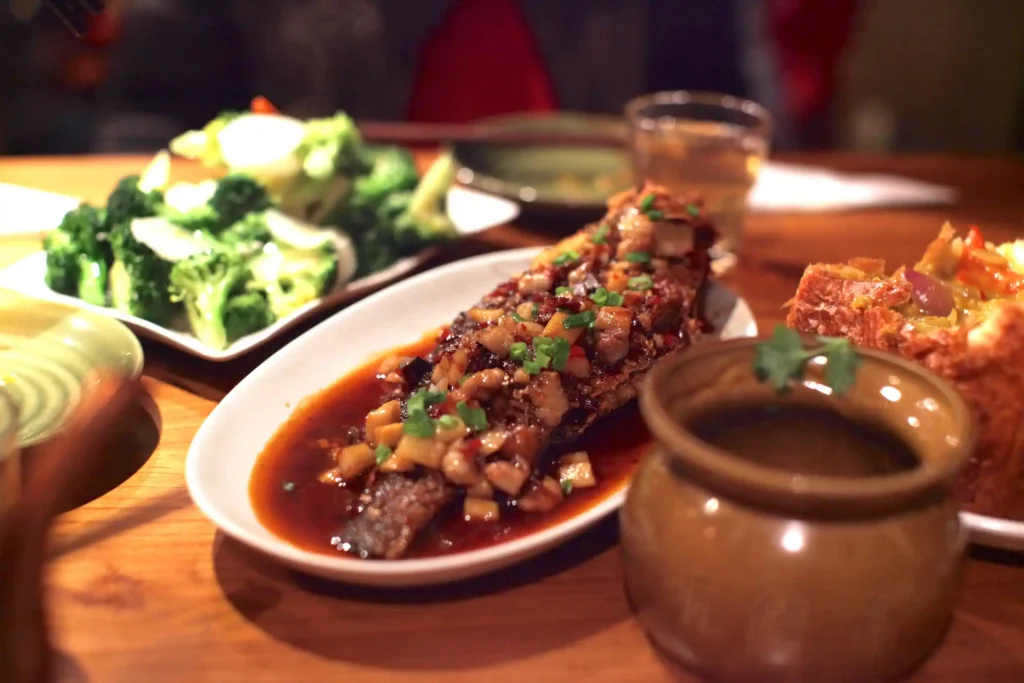
The West: Sichuan’s Fire and Border Influences
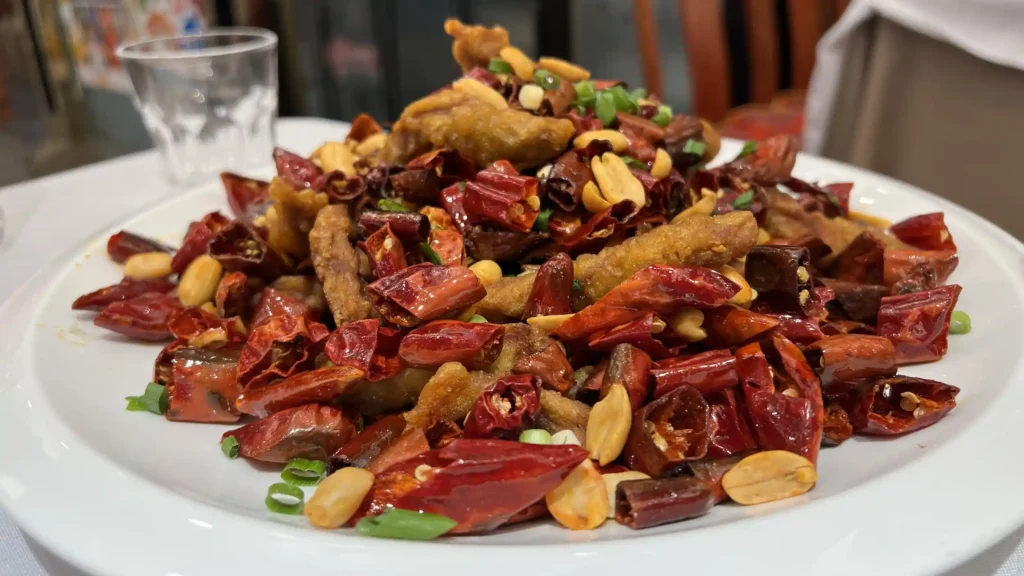
Western China, led by Sichuan Province (四川), is synonymous with spicy and aromatic cuisine. The famous Sichuan pepper (花椒) produces a characteristic numbing sensation that, combined with chili peppers, creates the “málà” (麻辣) experience.
Iconic dishes such as Kung Pao chicken (宫保鸡丁) and Mapo tofu (麻婆豆腐) represent this tradition. Further west, in regions such as Xinjiang (新疆), the Muslim and Central Asian influence is evident in lamb kebabs (羊肉串) and flatbreads that contrast with the cuisine of the eastern part of the country.
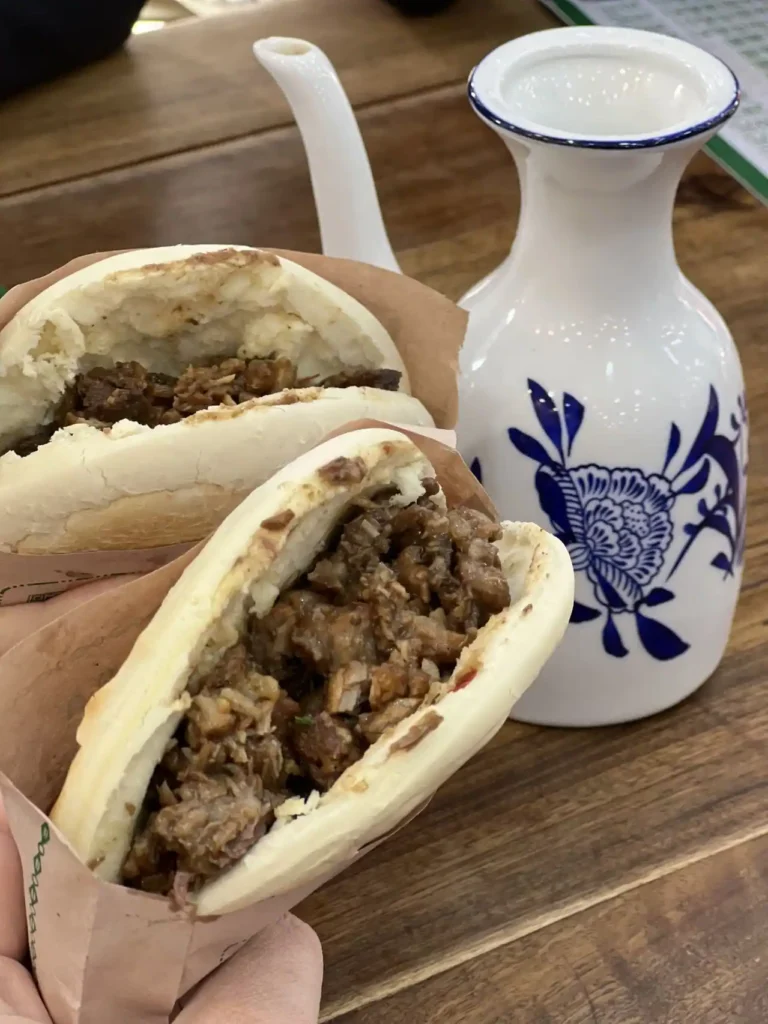
Spicy cuisine, more than just heat
Although spicy cuisine is primarily associated with Sichuan, other regions such as Hunan (湖南) and Guizhou (贵州) also cultivate spicy food traditions with different approaches. In Hunan, spiciness tends to be more direct and intense, while in Sichuan, a complexity of flavors is sought where spiciness is only one component.
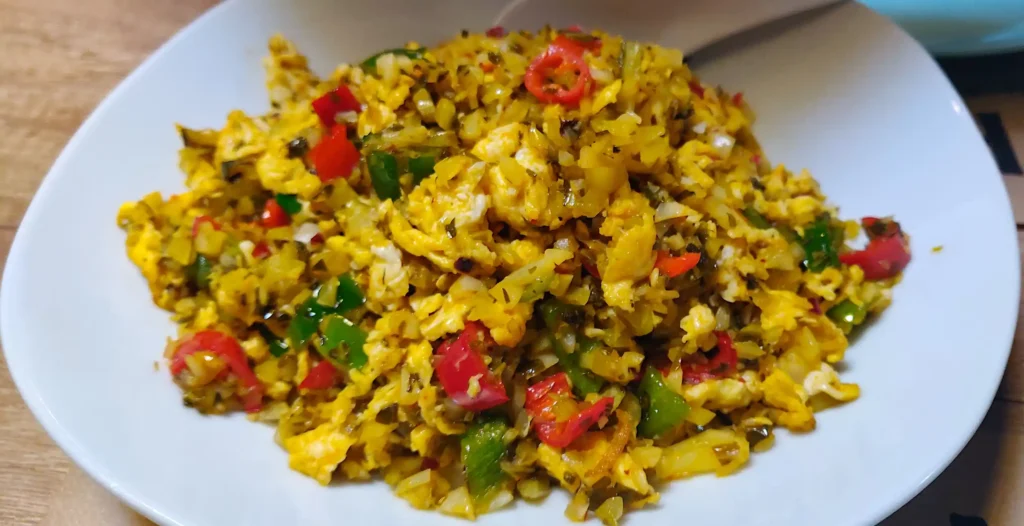
One of the spicy dishes that is gaining the most interest in the west is hotpot (火锅), translated as hot pot, originating in Chongqing (重庆市). Hotpot consists of a pot of broth boiling in the center of the table where diners slowly cook different ingredients, from lamb and beef to all kinds of vegetables, tofu, and various types of noodles.
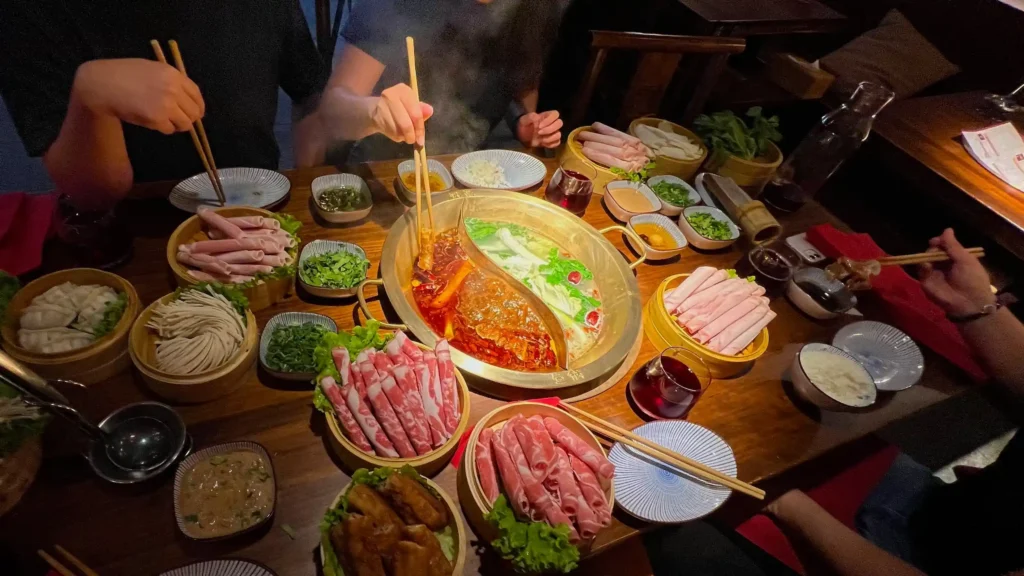
The use of spicy food in China has medicinal roots: according to traditional Chinese medicine (中医), spicy foods help dispel cold and dampness from the body, which is why many humid regions developed a preference for these flavors. Furthermore, chili pepper, introduced from America in the 16th century, allowed food to be preserved in times without refrigeration.
Foreign Influences and International Outreach
Chinese cuisine has experienced significant foreign influences, especially in cities with a colonial history such as Hong Kong (香港) and Macau (澳门). Chifa cuisine emerged from Hong Kong and spread throughout Latin America, and Sino-Portuguese fusion gave rise to unique dishes in Macau.
Contemporarily, globalization has brought influences from Japan, Korea, and the West, which have been reinterpreted by Chinese chefs. Dishes such as sushi with Chinese ingredients or hamburgers with Asian seasonings are common in large cities.
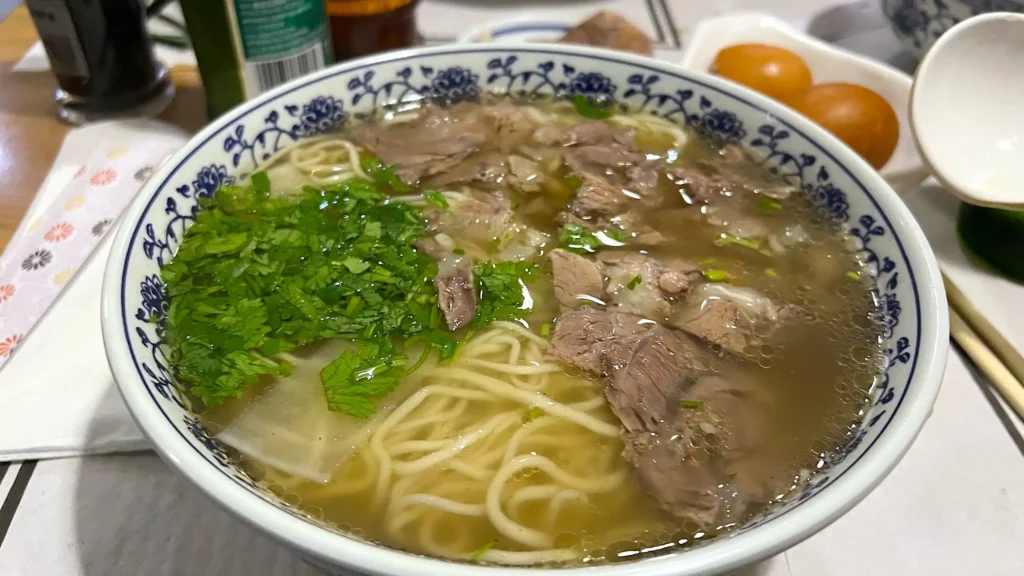
On the other hand, the influence of Chinese cuisine abroad has been monumental. In Japan, Chinese cuisine gave rise to ramen (拉面), in Thailand it influenced many stir-fry techniques, while in South Korea dishes such as jajangmyeon, noodles with soybean paste and vegetables, emerged from adaptations of Chinese recipes. Even Western cuisine has adopted techniques such as the wok (锅) for cooking over high and rapid heat.
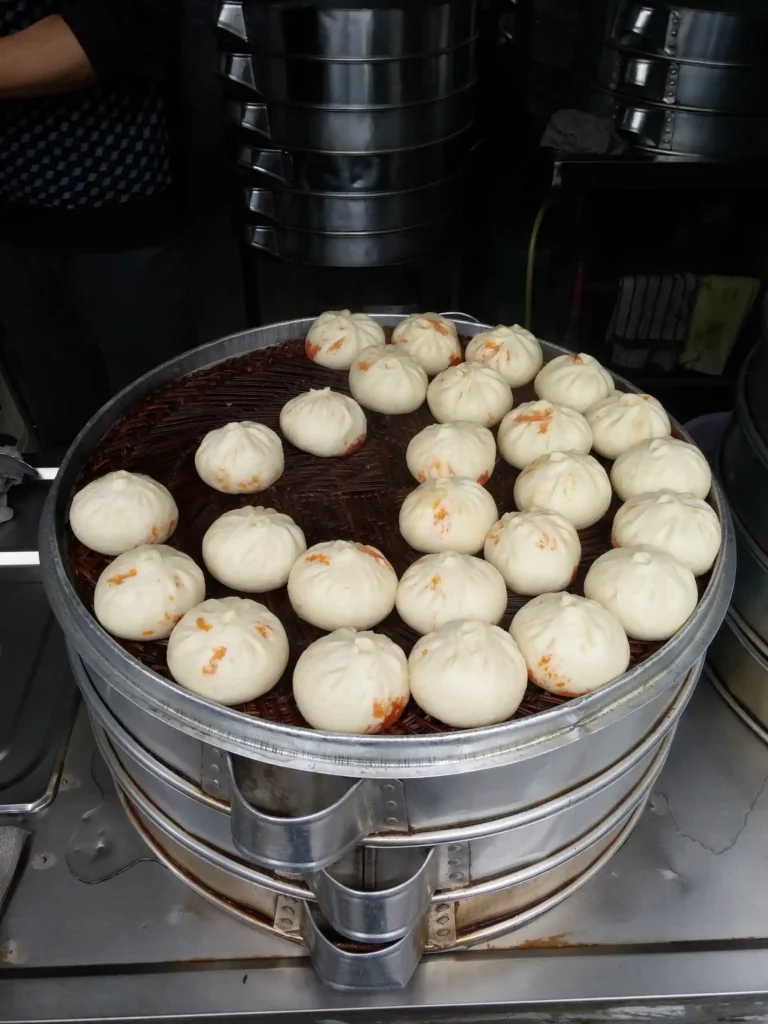
The wealth of ingredients: a universe of possibilities
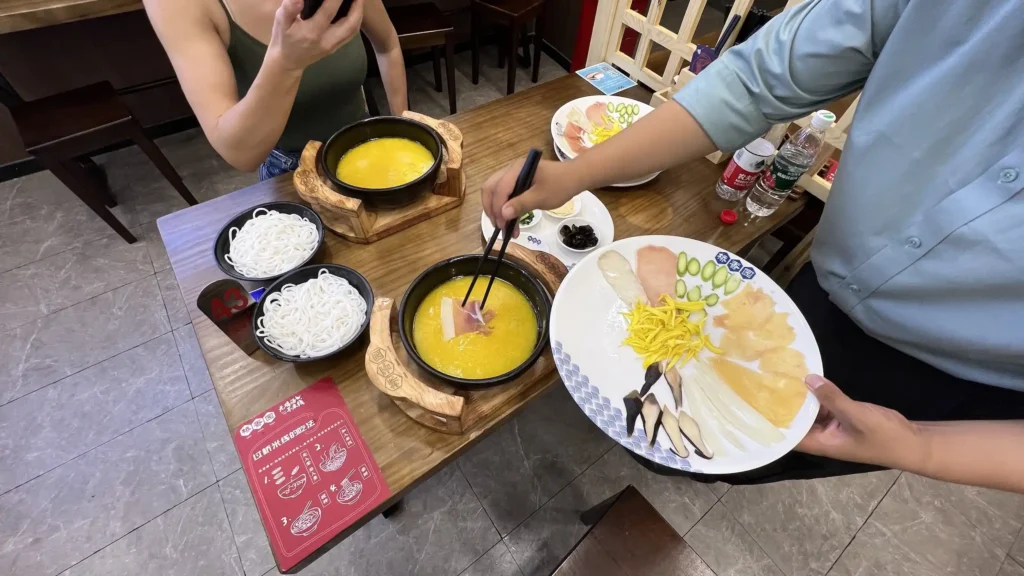
China’s geographical vastness and its diverse climate allow for a variety of ingredients that are difficult to match. From the wild mushrooms of the Yunnan mountains (云南) to the seaweed off the coast of Fujian (福建), the Chinese pantry is extraordinarily diverse.
Ingredients such as fermented soybean paste (豆瓣酱), soy sauce (酱油), cooking rice wine (料酒), bamboo shoots (竹笋), and lotus root (莲藕) add complexity and depth to dishes. Fermentation, drying, and preservation techniques have developed unique flavors such as the umami of fermented tofu (豆腐乳).
What awaits the culinary traveler in China
For the traveler who ventures into China, the culinary experience can be both fascinating and overwhelming. A universe of unimaginable flavors and textures awaits.
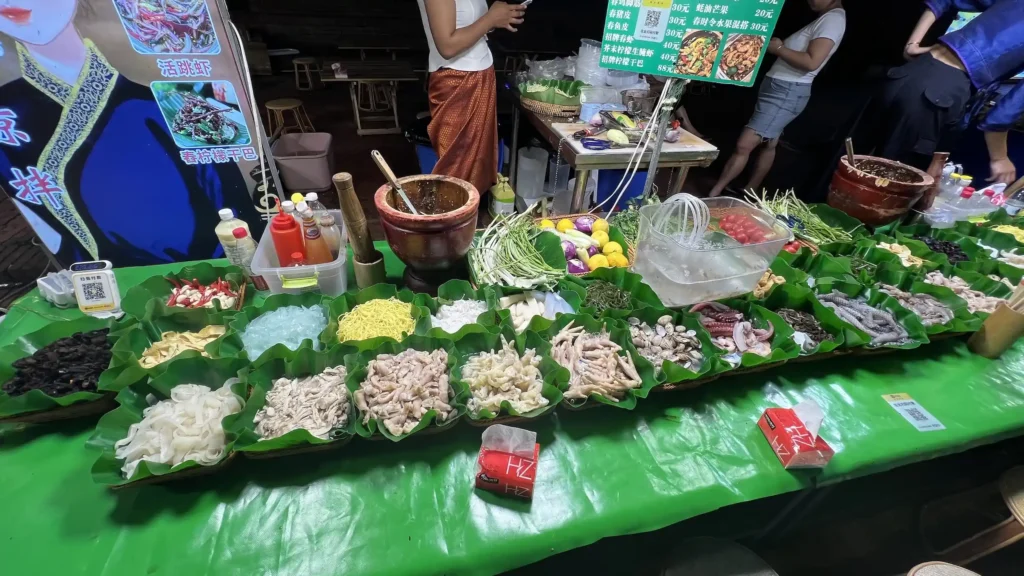
Chinese restaurants typically serve in a sharing format, with dishes arranged in the center and a rotating table (转盘) that facilitates access to all the dishes. Table etiquette is important: serving tea (or beer) to others before yourself, not leaving chopsticks (筷子) stuck vertically in the rice, and trying everything are some basic rules.
Chinese breakfast surprises many Western travelers with its savory and substantial nature: rice porridge (粥, zhōu) with pickles, steamed buns, or noodles are common ways to start the day with energy. Sometimes there isn’t much difference between what you would have for breakfast and what we in the West would consider lunch or dinner. Despite this, it is possible to find breakfasts closer to what we eat in the West, such as toast, muffins, crepes, waffles, juices, or yogurt. Depending on the hotel where you stay, they will offer Chinese-style breakfasts, Western-style breakfasts, or both.
Foodie Traveler Tip
The best way to delve into Chinese cuisine is with curiosity and an open mind. Textures like gelatinous or crunchy, highly valued in China, can initially seem unfamiliar to Western palates. We recommend starting with more accessible dishes like dumplings or noodles, then gradually venturing into more distinctive regional specialties.
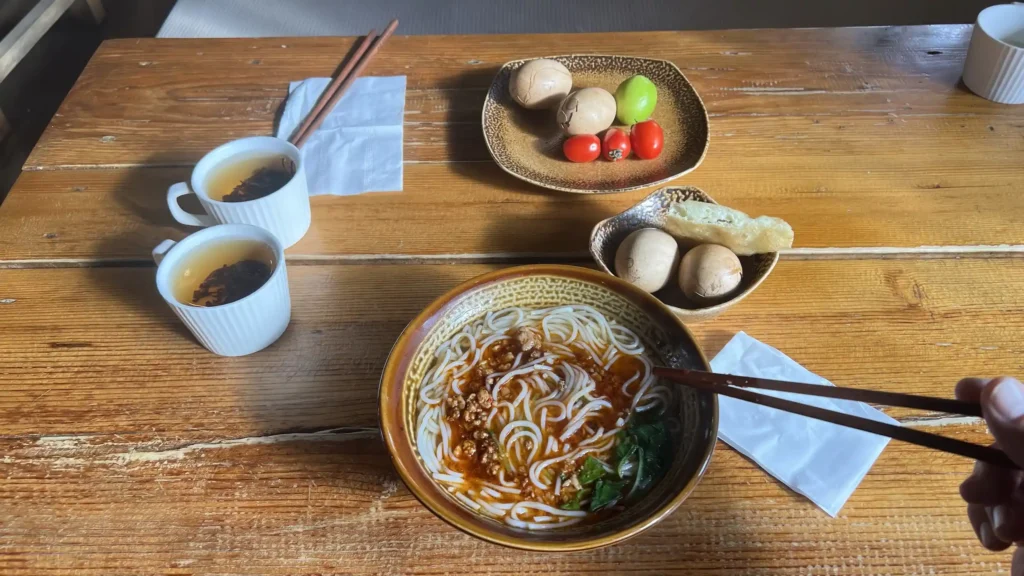
The language barrier can make ordering at restaurants difficult, but most establishments have menus with photographs and, occasionally, even English translations.
If this article has sparked your interest in exploring China’s culinary treasures, don’t hesitate to contact Asiahop to design a tailor-made trip focused on authentic culinary experiences.
Our specialists can arrange visits to local markets and reservations at select restaurants that reveal the true essence of ancient Chinese cuisine. We’ll also accompany your trip with our specially tailored Chinese food guide, created by the Asiahop team.